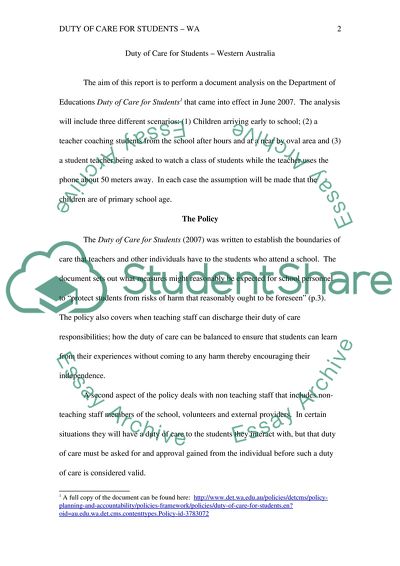Cite this document
(Duty of Care for Students Western Australia Report Example | Topics and Well Written Essays - 2000 words, n.d.)
Duty of Care for Students Western Australia Report Example | Topics and Well Written Essays - 2000 words. https://studentshare.org/education/1756805-document-analysisanalyse-the-western-australian-duty-of-care-for-students-policy-document-from-the-department-of-education
Duty of Care for Students Western Australia Report Example | Topics and Well Written Essays - 2000 words. https://studentshare.org/education/1756805-document-analysisanalyse-the-western-australian-duty-of-care-for-students-policy-document-from-the-department-of-education
(Duty of Care for Students Western Australia Report Example | Topics and Well Written Essays - 2000 Words)
Duty of Care for Students Western Australia Report Example | Topics and Well Written Essays - 2000 Words. https://studentshare.org/education/1756805-document-analysisanalyse-the-western-australian-duty-of-care-for-students-policy-document-from-the-department-of-education.
Duty of Care for Students Western Australia Report Example | Topics and Well Written Essays - 2000 Words. https://studentshare.org/education/1756805-document-analysisanalyse-the-western-australian-duty-of-care-for-students-policy-document-from-the-department-of-education.
“Duty of Care for Students Western Australia Report Example | Topics and Well Written Essays - 2000 Words”. https://studentshare.org/education/1756805-document-analysisanalyse-the-western-australian-duty-of-care-for-students-policy-document-from-the-department-of-education.


